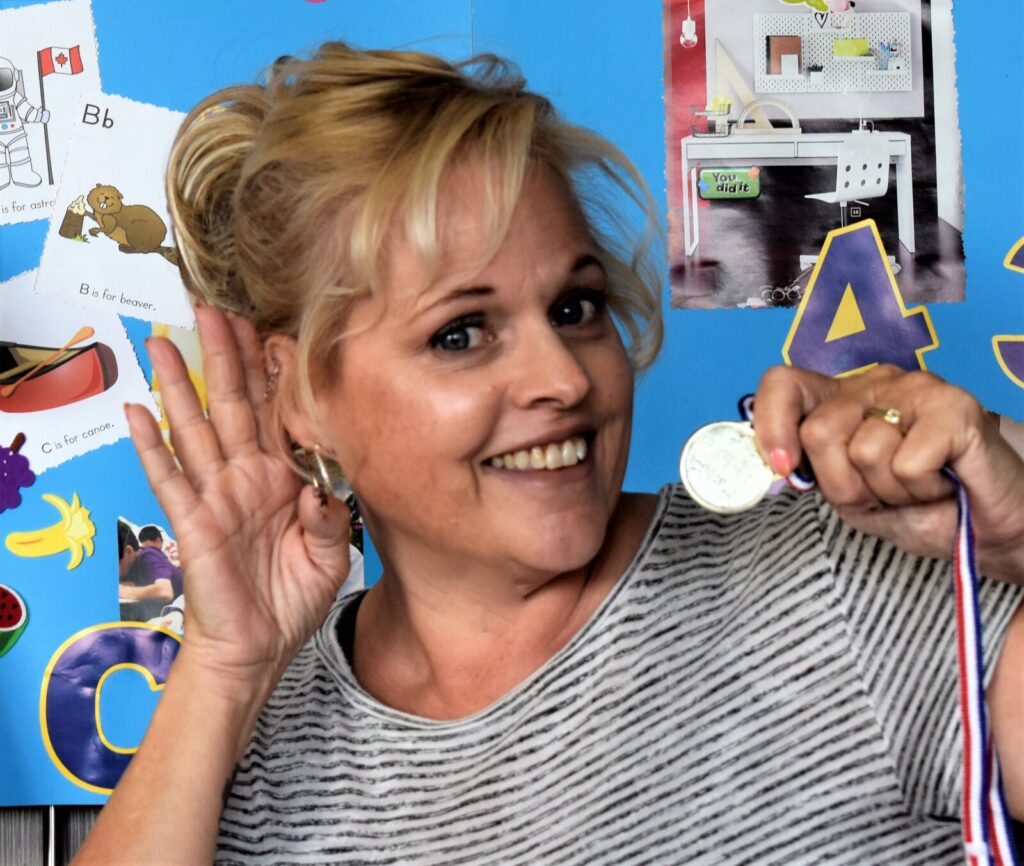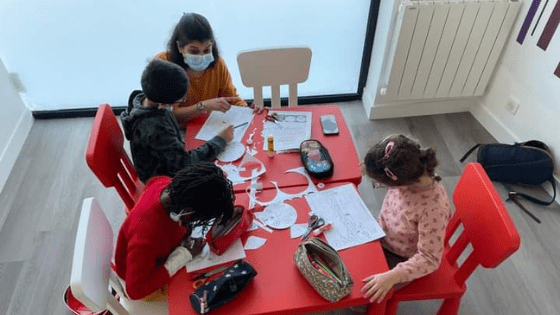Many aspiring ESL teachers fear that they won’t be able to teach English without knowing another language. This fear is unfounded, as most ESL opportunities do not require teachers to speak their students’ native language, and some won’t even allow it! Let’s take a closer look at why this is and what teaching strategies you can use when you don’t speak another language.
Can I teach English abroad without knowing the local language?
Requirements to teach English abroad
The most common teaching English abroad requirements, although these will vary depending on your employer, are as follows:
- Native or near-native fluency in English
- TEFL certification
- Teaching experience
- A degree (sometimes in teaching or in English)
Notice that speaking the local language (if you’re teaching English abroad) or your students’ language (if you’re teaching English online) is not on the list! While there are some ESL jobs that do have a language requirement or that give preference to applicants who speak a second language, these are fairly rare.
If you have native or near-native English fluency and are TEFL certified, you will have little trouble finding opportunities to teach ESL without being bilingual.
Get TEFL certified online for the ultimate flexibility.
The immersion method
If you are worried about not knowing the local language, consider that many teaching opportunities make use of the immersion method, a popular ESL method that prohibits ESL teachers from speaking their students’ native language. This means that even if you do speak a second language, a number of employers will ask that you refrain from using it during class.
The immersion method is used with young children and adults alike. And, even if your school doesn’t forbid it and you do speak your students’ native language, which is called their L1, it can be a good idea to hide your linguistic skills. This is because, oftentimes, if students discover that their ESL teacher speaks their first language, they are tempted to fall back to using it and staying in their comfort zone instead of stretching their English language capabilities to the max.

Living in a foreign country without speaking the language
Knowing the local language can certainly make things simpler when teaching abroad, as it will make it easier to get around, take care of everyday logistics like banking or grocery shopping, and possibly even make new friends. But you don’t necessarily have to be fluent in the local language before you get to your destination. In fact, many ESL teachers embrace teaching English abroad as a way to immerse themselves in a foreign language in order to learn it.
By getting outside of your comfort zone and teaching English in a foreign country where you don’t speak the local language, you will learn countless skills that will prove invaluable in the ESL classroom. For example, you’ll have greater empathy for your students and their struggles with learning English. What better way to understand the difficulties your ESL students endure than to endure them yourself?
At the beginning of your language learning journey, there are a few things you can do to make the transition smoother:
- Learn a handful of essential phrases beforehand. For example, knowing the words for basic greetings and understanding how to ask for directions or how to call for help should be among the first things you learn in the new language.
- Carry a pocket-sized guidebook with you at all times. This will serve as your lifeline when you get stuck and need help. If you have internet access, then you can, of course, use your phone to utilize Google Translate or another app, but having a physical guidebook is a good backup for when you’re in a pinch – you never know how accessible Wi-Fi or cell service abroad will be until you get there!
- Don’t be afraid to make mistakes. Nine times out of ten, locals will look favorably on you if you just put in the effort to use the local language, even if you butcher it! Embrace being a novice at speaking the language, and don’t get too caught up in being embarrassed. After all, you’d give the same advice to your ESL students who are learning English!
ESL teacher Camille Turner had this to say about her experience teaching in Italy without speaking Italian:
“I’ll never forget my first experience abroad in Italy when I was out on my own at a restaurant trying to order food using my Rick Steve’s travel guide. When I had finished my broken Italian phrases, all of the waiters and clients eating there started clapping for me! They were all listening and applauding the fact that I had tried to speak their language. It was quite the warm welcome, and I immediately learned that as long as you try to use their language (and use lots of gestures!), people will generally meet you halfway no matter where in the world you are. As for my ESL students, not speaking the language benefited them as they were forced to try to communicate with me in English.”
Read more about Camille’s experience teaching English in a foreign country.

Can I teach English online without a second language?
If you want to work from home or you aren’t quite ready to head to a foreign country yet, you can get your feet wet by teaching English online. And no, you don’t have to speak a second language for that either.
Just like in English classrooms abroad, many online ESL companies, and even private students, prefer that their classes be taught exclusively in English.
Furthermore, if you’re teaching English online to groups, you may have students from different countries who speak different first languages in the same class. Even if you’re teaching students one-on-one, you’ll likely have students from different countries. This is especially true if you’re teaching English online as a freelancer or via an ESL marketplace. Thus, even if you do speak a second language, it might not be useful in these situations.
How do I teach English without speaking the students’ language?
Depending on the language level of your students, teaching English without speaking your students’ language can be a challenge. For beginner-level ESL students, there will be an adjustment period that will require a lot of patience on both sides. Below are some strategies to make this adjustment easier for everyone.
Adjust your register
While your students learn to adjust their ears to a new language, you may also need to adjust your register. This means relying on vocabulary that your students are more likely to be familiar with and limiting overly complicated slang or jargon. You will start to speak in shorter sentences, take more pauses, and ask concept-checking questions (CCQs) to maintain listener engagement.
Offer clear, concise instructions
There’s nothing worse than a room full of confused students. If you’re leading your students in an activity, break it down into smaller steps. Give short, clear instructions for the first step. Walk around to ensure all students are on the same page. Move on to the next step when the first has been completed successfully.
Use TPR
Total Physical Response (TPR) is a way to teach language and communicate using physical movements along with verbal input. Connecting speech and action is a great way to introduce new vocabulary as well as reinforce words that your students have already learned.
Some days, teaching English can feel like one giant game of charades. Invite your students to play along. Practice vocabulary and phrases by acting them out and saying them at the same time. Have your students repeat the words and actions after you. This is a great confidence-building activity that can also be a lot of fun.

Incorporate props, realia, images, and other diverse resources
Language is a medium that helps us connect with and navigate the world around us. Even babies learn vocabulary while simultaneously discovering the objects and feelings that new words correspond to. You can emulate this powerful experience by using a variety of props, realia, images, videos, music, and more in your ESL classroom. The more connections you can create between language and sensory experiences, the more impactful you will be as a teacher.
Offer plenty of speaking opportunities for students
How can you expect students to learn English without giving them opportunities to speak it? Offering students adequate speaking opportunities is so important yet so overlooked that ESL experts created an acronym for it: STT (Student Talking Time). Limit TTT (Teacher Talking Time) to introducing new concepts or giving instructions. Give your students the minimum viable language they need to interact for a specific activity, and then let them get after it!
Check out 11 fun TEFL speaking activities.
Repeat yourself
As an ESL teacher, if you’re not playing charades you’re probably repeating yourself. This is not a bad thing, and it doesn’t necessarily mean that your students aren’t paying attention. Humans need repeated exposure to new concepts before they fully internalize them. Don’t be afraid to repeat yourself as many times as necessary. It’s a staple of human learning.
Teaching English without knowing a second language can be a daunting task, especially when your students have low levels of English. However, your ability to overcome these linguistic barriers by utilizing skills like TPR, empathy, and repetition will make you an infinitely more effective ESL teacher. So, don’t worry if you don’t speak a second language – just use it to your advantage!






